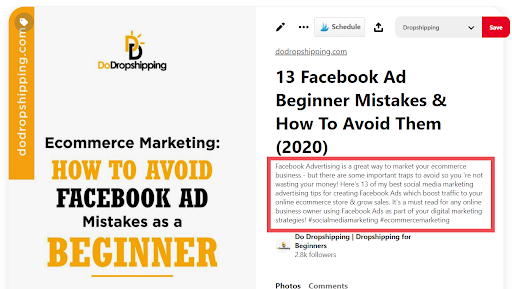Writing Social Media Content
Introduction to Writing Social Media Content
Claim Your Social Media Money
Social media has become embedded in our everyday lives. It’s hard to imagine how we could live in the modern world without all the cool benefits we get from social media platforms:
Social media is a lot of fun, for sure. But can you make money with it as a writer? Absolutely! Research shows that the social media market is worth a whopping $200 billion. But we’re still just getting started. Within a few years, that will increase to over a trillion bucks!
The market is massive—and it needs content to make it work. After all, social media is all about sharing…and you have to have something to share.
Because of this, businesses worldwide hire writers to create social media content for them. The demand in this niche is insatiable because the content has a short shelf life. In the same way that nobody wants to read yesterday’s newspaper, no one’s interested in yesterday’s social media content.
All the social media platforms know this, so they keep refreshing feeds with new content. And this means businesses have to keep ‘feeding the machine’ with fresh, relevant content. All this is good news for you. It means there’s a never-ending need for writers who can write good posts. Even as a rookie, you will find more opportunities than you could ever handle.
Social media content can be presented in many different formats:
Short Status Updates
The shortest form of social media post is simple status updates for platforms such as Facebook. These typically only require a few sentences of text, at most. As such, they are easy to write…and an excellent way for you to get into writing social media content.
Status updates may be short, but businesses need a lot of them. Some companies may post as many as 10 times a day across various platforms, adding up to a lot of content. So you may get paid to write batches of content—perhaps 10 to 20 posts at a time.
There’s certainly plenty of work to keep you busy!
Longer Articles
Some companies prefer to use longer status updates to get their message across. These may be a few paragraphs long or could be as long as an article. The length will vary depending on the social media platform being used, as some allow more space than others.
Here you need to deploy a different set of skills. This is another opportunity to use the article-writing tips we have already discussed, deploying them to keep your longer updates lively and engaging all the way through.
Images & Video
Images and videos are typically the most shared content, so it’s no surprise that there’s a huge demand for content of this type. You might think this is a job for a designer or producer, with little input from writers required—but that’s not the case!
You can help by writing the description that accompanies each image or video. On many platforms, there’s room to write a lot of copy in the description field. On Pinterest, for example, you can write up to 500 characters, giving you plenty of space to contribute.
There’s plenty of description-writing work to keep you busy, but it’s only part of the story. You could also write headlines to go with the content, or even contribute to the content creation. There are all kinds of possibilities.
Documents & Papers
In some cases, the content will be in an even longer form, such as detailed documents and white papers. This is most common with business-to-business communications. So this type of content is more likely to appear on platforms such as LinkedIn.
Once again, you can help by writing the titles and descriptions for the associated social media posts. Or you may be asked to contribute to creating the content, depending on your knowledge and expertise.
As you can see, there is writing work available for every skill level. You can start out writing simple status updates, then graduate to higher-paying jobs as your expertise increases.
How to Write for Social Media
The Write Way to Write
Social media is incredibly powerful and can make a massive difference to a company’s success. That’s why businesses will pay you good money to write social media content for them.
But as a writer, how do you get the best results from social media posts and updates? The fact is, every platform is different. You need to know how to get lots of shares and comments on each social media network.
Don’t worry, though; it’s not hard. Especially when you follow these handy guidelines:
Facebook
The #1 social media platform gives you several options because it handles multiple media types. Different posting techniques can work well, depending on your goal.
To find success on Facebook, you need to ‘read the room’ and respond to your audience. These guidelines will help you do just that. You should:
Twitter
Tweeting requires smart, concise word choices to convey your message within a limited space. It can take a little extra practice, but once you get the hang of it, your tweets will take off.
When posting on Twitter, take this advice into account:
Instagram
Instagram is all about visual content, but that doesn’t mean you can skate by with short captions. If you want your audience to interact with your content, your words matter. So bear these tips in mind:
LinkedIn
LinkedIn is primarily a networking platform where business professionals and brands share industry insights, news, and updates. The latest “epic fail” video going viral on Facebook won’t fit in with what LinkedIn’s audience expects.
So when posting on LinkedIn, keep in mind that:
Pinterest
Much like Instagram, the focus on Pinterest will be on the picture rather than the text. That being said, the right description can give your post a significant boost. Try these tips the next time you post a pin:
You can apply similar techniques to other social media platforms. Once you have a little practice, you’ll find it’s easy to write for any network.
How Much Can You Make?
Social Media Megabucks
With so many platforms to be active on, plus the need to keep producing fresh content for each network, businesses are often overwhelmed when creating content. They need help and lots of it.
So the demand for good social media writers exceeds the demand. That puts you in a solid position to earn good money in this niche. You can succeed even if you have limited experience, as long as you can deliver on all the following:
How far can you take this? That’s entirely up to you! There are many true stories of people who have started out writing social media content and gone on to great success. You can build a six-figure income doing this, wherever you are in the world.
Better still, the work is not difficult. This is especially true if you have one or two clients you write for regularly. Once you know the company and its products, you can easily knock out content without trying too hard.
That’s the key to making good money in the business. And it could be your ticket to making megabucks while relaxing on the beach—doing minimal work and having maximum fun!
Good Rates of Pay
As a new writer in the social media world, you will naturally start at the lower end of the scale. Even so, you can still earn decent money by most people’s standards.
Depending on the length and complexity, you could get a rate of perhaps $20-$50 per social media post. Or you can ask for batch rates, such as:
These are just suggestions to put you in the right ballpark, but you can easily get paid even higher rates. For example, if you work for larger corporations, they won’t even blink at paying more. A few thousand dollars for social media content is nothing to them. They may even wonder why you’re not charging more!
One thing’s for sure. Once you get established, you can make very good money from writing social media content.
Tips & Tricks
Top Tactics
You’re already well on your way to becoming a successful social media writer. But if you follow these tips and tricks, you can earn a reputation as a top-tier writing professional:
Use Your Casual Voice
Remember why people are using social media in the first place—to connect with friends. So you need to be a friend, too. Here’s how:
Get to the Point
Social media isn’t the place for deep musings, case studies, or pasted stories. You don’t have to use the entire word count. Studies show that some of the most shared posts are only a few words long.
Keep It Personal
Focus on using pronouns such as “we” “I,” “me,” and “you” as opposed to “the company,” “the client,” or “the team.” Remember, you are trying to build connections and engagement. Lecturing your followers from your high corporate tower just doesn’t cut it.
Write as though you are speaking directly to each fan, and you will see a much better engagement rate.
Do Your Research
You can be the best writer in the world, but if you don’t do your research, your posts just won’t resonate with your audience.
Get to know your audience. Understand their interests, lifestyle, and values. The more you know about them, the easier it will be to write for them.
Break Punctuation Rules
In general, good grammar is important. But when writing informally, you can be flexible with punctuation (just as we are in everyday speech).
You may be a professional writer, but social media writing isn’t like writing a thesis. You can break some traditional rules when creating social media posts. Here’s how:
Write Great Replies
Posting updates is only part of your job as social media manager. You may also be asked to construct on-point replies to fans.
To do this, you need to understand the brand voice. Is this a cheeky brand that likes to play with fans? Or is this the straight-to-the-point brand that answers questions without chatting? Either way, you need to write in the appropriate style.
Be Positive
In some of your posts, you may choose to share your opinion or take a stand on something important to the brand. But there’s a difference between taking a stand and attacking and criticizing others.
Avoid being negative towards anyone publicly. Criticizing others is not only unprofessional but also dangerous. It can draw more negative people to the page and can hurt any trust or credibility you've built with followers.
Be Truthful
Avoid making false promises in your content, or you may damage the brand. Sure, you want to present a company in the best possible light, but don’t be tempted to exaggerate. If you work with businesses that sell great products, you should be able to tell the truth proudly.
Follow these recommendations, and you will easily produce content loved and shared by audiences worldwide. That will lead to more work for you—and more money in the bank!
Training Modules
Copyright 2024 - Paid Online Writing Jobs - All Rights Reserved
Copyright 2023 - Paid Online Writing Jobs - All Rights Reserved



















 ?
?

 !
!